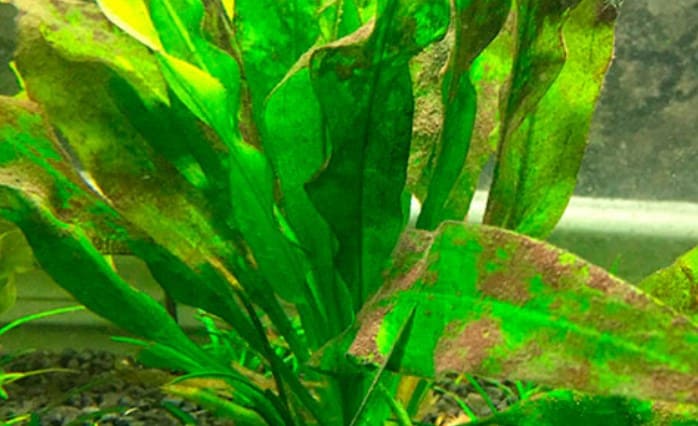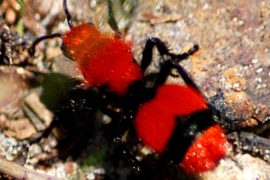Brown algae and diatoms like to settle in newly set up aquariums. They usually disappear by themselves as soon as the biological balance in the tank is established and the water parameters stabilize. In the start-up phase of aquariums, the diatom is clearly one of the most frequently occurring types of algae. Here we explain how they fight the algae and identify them reliably.
Brown algae/diatoms in the aquarium
The good news for aquarium owners who discover brown or diatoms in their tank: They do not pose any direct danger to the inhabitants of the aquarium – unlike, for example, the so-called blue-green algae, which produce toxins. These can threaten aquarium inhabitants and aquatic plants.
Compared to other types of algae, such as brush or beard algae, diatoms are relatively easy to remove and enter if the water conditions are not affected by e.g. B. abruptly change a very large water change, usually not again.
Even if the diatom is one of the harmless algae, it should be fought early. However, if you discover algae or growths in your aquarium, these must first be identified, because the first step in combating algae is always the correct determination of the type of algae.
Especially if you have a newly set up tank, it is likely that it is harmless brown algae or diatoms. However, it is important to be safe. Only when you can reliably identify the type of algae can you decide whether immediate action is necessary. With diatoms, it is also possible to wait until the problem resolves itself. This can be fatal for other types of algae.
How to recognize the brown algae or diatom:
The diatom is brown in color and forms greasy, unsightly carpets on the substrate, windows, stones, and plants. If it hasn’t disappeared even after the running-in phase, it can be assumed that there is an imbalance in the pelvis that needs to be specifically combated. Sometimes aquarists only notice the brown algae when they say: The aquarium plants are turning brown. In truth, the plants themselves do not discolor but are overgrown by the diatoms.
Read more: Our further article explains further information about different algae in the aquarium. There you will find out, for example, how you can avoid algae in the aquarium or which types of algae can appear in the aquarium.
Common causes for the appearance of brown algae/diatoms
The occurrence of brown algae or diatoms during the start-up period of the aquarium is not uncommon and also not a real threat, as it usually disappears on its own.
However, if the diatoms remain in the aquarium well beyond the tank’s break-in period or only appear months later, you should act. Check the most important parameters and correct them if necessary. You can find more tips on this in our article on combating algae in the aquarium.
The occurrence of brown algae/diatoms is favored by
- unsuitable water values
- obsolete or inappropriate light bulbs
- wrong lighting times
- neglected pelvic care
- too high phosphate levels
Diatoms or brown algae feel particularly comfortable in tanks with weak lighting. Here it is important to intensify the type of lighting, extend the lighting time, or replace the lamps, taking into account the needs of all pool residents. But be careful: the lighting must not be too strong either, otherwise other types of algae could feel invited.
Tip: The light spectrum of fluorescent tubes changes with increased service life. Change the bulbs at regular intervals. In this way, you ensure optimal lighting at all times.
Neglecting the care of the aquarium also creates good conditions for the occurrence of brown algae or diatoms. Carry out regular partial water changes, depending on the size of the pool, at weekly or bi-weekly intervals. Depending on the stock type and density, clean the filter and the filter material regularly every four to six weeks – but never at the same time as changing the water.
Successfully combat brown algae/diatoms
Brown algae or diatoms can be removed manually quite easily, as they do not stick to the substrate as stubbornly as brush or beard algae. Diatoms can easily be wiped off aquarium panes or other surfaces. You can also easily vacuum them off the substrate.
After wiping and vacuuming, a larger partial water change (up to 80 percent of the pool contents) follows, during which many of the algae parts floating in the water are removed. If you carry out the steps of wiping, vacuuming, and partial water changes on several days in a row, most of the diatoms should be eliminated. It is now a matter of permanently preventing their return by ensuring optimal conditions in your aquarium.
How to eliminate stubborn brown algae/diatoms
If the algae have spread a lot, manual removal is not a sufficient solution. If more diatoms appear in your aquarium outside of the start-up phase, you have to resort to other means.
The method of “dark cure”, the darkening of the aquarium for several days, which is successful with many other types of algae, is unfortunately of little help with diatoms, as they can get by with very little light for a long time.
If you cannot permanently get rid of the diatoms or brown algae by extensively changing the water and adjusting the water parameters, the only option is to use chemical agents. However, you should only use these if you have checked all parameters thoroughly and the manual methods of combating algae remain ineffective.
Remember: A treatment with chemical agents represents a significant intervention in the balance of the aquarium and is therefore always an emergency solution. If you cannot get the algae under control in any other way, you can use AlgExit from Easy Life, which, according to the manufacturer, is also effective against other types of algae in addition to diatoms.
It is always best to do without chemical algaecides. If you take good care of your aquarium and keep the water values in an optimal balance, you will succeed in most cases.
We wish you every success in eliminating the brown algae or diatoms in your aquarium and hope that we have been able to help you with our tips. What are your experiences with brown algae? We look forward to your contributions and comments!





